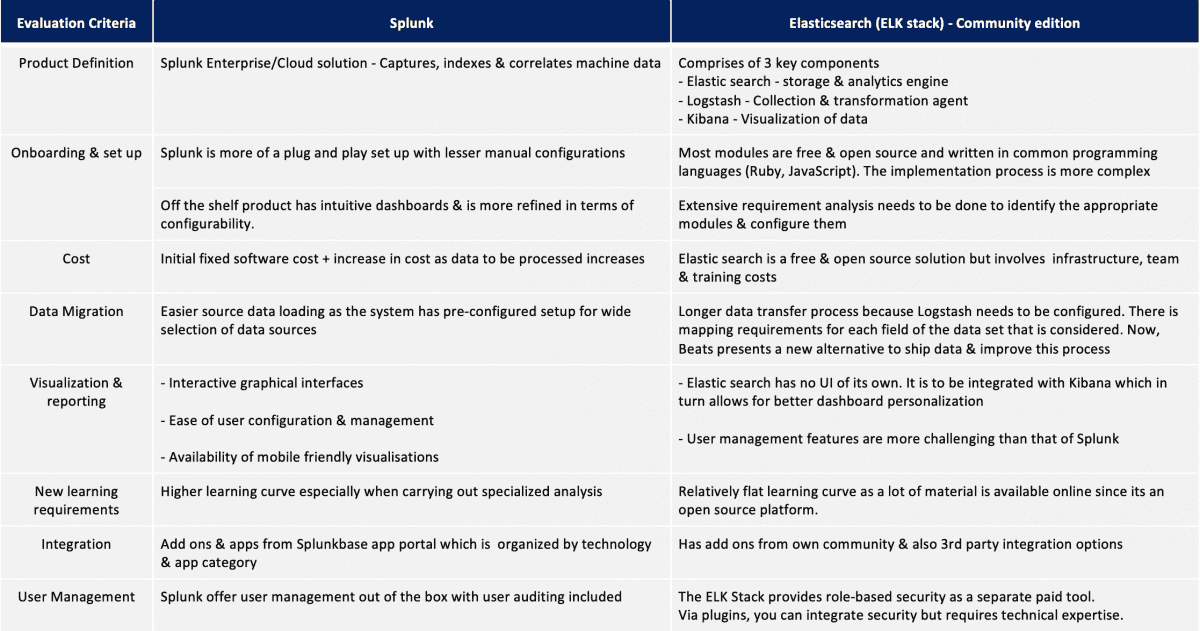Need for effective Log management systems – Comparing Splunk & Elastic search
Reading Time: 3 minutes

Continuous integration and Continuous Deployment have increasingly shortened the time taken to build applications that need frequent changes, while still maintaining a reliable delivery process. On the other hand, Forrester states that Only 33% of new features have a positive impact on outcomes, 33% have no impact, and the final 33% actually have a negative impact. This makes it clear as a bell, the importance of a robust feedback process in the CI & CD process flow.
With increasing adoption of containerization and microservices, employing the right log analysis and centralized log management platform can help devops teams clearly analyze and take the right action on the feedback. With the market being flooded with a plethora of options to choose from, we attempt to compare 2 very popular platforms Splunk & Elastic search to ease your decision-making process in choosing the one that works best for you.

While both platforms are adept for Advanced log Analytics for security log systems, application and log monitoring & BI, Splunk was mainly built for targeting big enterprises & only recently has made inroads for smaller companies. ELK, on the other hand, has enjoyed wide adoption from the beginning.
For organizations that are dependent on quick availability of insights for urgent decision making, Splunk is the way to go owing to a lesser time to go live.
If the IT budgets are fluid based on operations, Splunk is a good choice. Whereas if budget is more towards being fixed, (or there is a lot of existing unused infrastructure – network devices, computing power) and the company is looking at the long-term, then ELK is a better investment because after the initial complex procedures, the operations teams start streamlining the processes and things start going smoother, and costs go down significantly.
Elastic search is perfect for organizations that have very competent internal IT teams (separate teams that handle each aspect of the full stack) that can handle the various builds & configurations that are a part of the ELK infrastructure leveraging community help & support. It’s also ideal where data mapping is done initially can suffice for long periods of time as correcting/modifying mapping is a time-consuming process
A quick 7 point guide while evaluating between Splunk and ELK

Conclusion
There is a major shift from information seeking to predicting problems. Early detection is the mighty need of the hour from log management platforms. Probing systems in predictive ways greatly enhance readiness to mitigate if not prevent major outages and subsequently save costs.
With vast experience in managing devops for clients across industry verticals, Sigmoid has deep expertise in recommending and implementing the ideal log management platform considering their current needs, system infrastructure, long term vision and budget.
About the Authors
Sudeep is a Senior Pre-Sales Manager at Sigmoid. This blog was co-authored with Jagannath who heads the DevOps team at Sigmoid.
Featured blogs
Subscribe to get latest insights
Talk to our experts
Get the best ROI with Sigmoid’s services in data engineering and AI
Featured blogs
Talk to our experts
Get the best ROI with Sigmoid’s services in data engineering and AI






